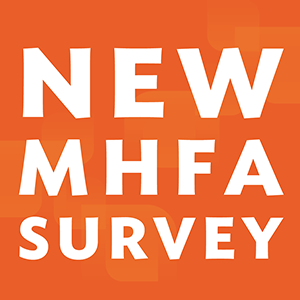History was made on Saturday, July 16, 2022, when the new 988 Suicide & Crisis Lifeline officially launched. This easy-to-access, national three-digit number is now live and can be utilized by anyone in a mental health and/or substance use crisis across the nation.
The vision for 988 is to be as inclusive as possible, while being easy to access and offering flexibility to best serve specific community and population needs. This is no small task. Much thought, planning and care was taken to ensure that 988 would be flexible and responsive to meet the needs of populations served by the line, as well as to support service providers as they implemented 988.
To support a successful launch and implementation, the Substance Abuse and Mental Health Services Administration (SAMHSA) – in co-sponsorship with the National Association of State Mental Health Program Directors (NASMHPD) – convened national thought leaders from more than 50 different organizations, including the National Council for Mental Wellbeing, to develop playbooks to assist with the effective implementation of 988.
Four different playbooks were created, with each one designed to help guide a critical sector in their 988 implementation and readiness efforts. These audiences included states, territories and tribes; mental health and substance use disorder providers; Lifeline contact centers (since 988 utilizes and expands upon the existing National Suicide Prevention Lifeline infrastructure); and public safety answering points (PSAPs). SAMSHA also held two national convenings to capture feedback on the playbook development from key stakeholders across these populations.
Although the playbooks were initially developed leading up to the launch of 988, they remain highly valuable, as the launch of 988 is a historical milestone worthy of ongoing celebration and recognition. It is also one step in the evolution of the crisis services continuum and will continue to evolve over time as implementation efforts persist across states, territories, tribes and communities.
The playbooks offer valuable resources, with each one containing tailored operational readiness assessments, customized potential approaches, case studies highlighting innovations and helpful examples related to implementation, as well as additional resources. Nothing in the playbooks is a mandate or requirement; these guidebooks are strictly meant to be used as guidance.
To learn more about the playbooks, watch a SAMHSA-funded webinar that NASMHPD recently hosted with Chuck Ingoglia, the National Council’s president and CEO; Dr. Jon Palmieri, M.D., director of SAMHSA’s 988 and Behavioral Health Crisis Coordinating Office; and Dr. Brian Hepburn, M.D., executive director of NASMHPD. For additional information about 988, visit SAMHSA’s website.
Guest Author
Director of Practice Improvement and Consulting
National Council for Mental Wellbeing




